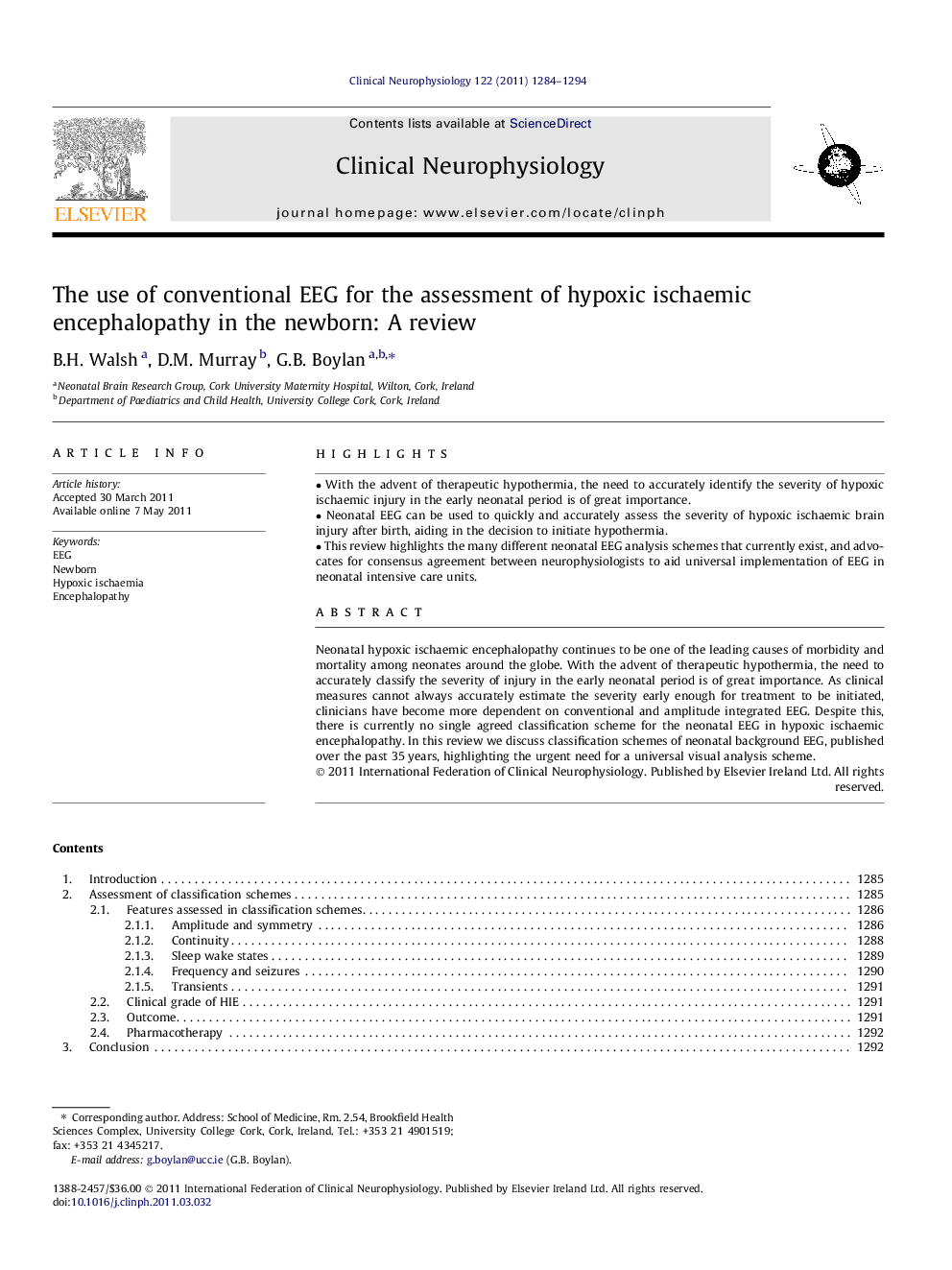| Article ID | Journal | Published Year | Pages | File Type |
|---|---|---|---|---|
| 3044772 | Clinical Neurophysiology | 2011 | 11 Pages |
Neonatal hypoxic ischaemic encephalopathy continues to be one of the leading causes of morbidity and mortality among neonates around the globe. With the advent of therapeutic hypothermia, the need to accurately classify the severity of injury in the early neonatal period is of great importance. As clinical measures cannot always accurately estimate the severity early enough for treatment to be initiated, clinicians have become more dependent on conventional and amplitude integrated EEG. Despite this, there is currently no single agreed classification scheme for the neonatal EEG in hypoxic ischaemic encephalopathy. In this review we discuss classification schemes of neonatal background EEG, published over the past 35 years, highlighting the urgent need for a universal visual analysis scheme.
► With the advent of therapeutic hypothermia, the need to accurately identify the severity of hypoxic ischaemic injury in the early neonatal period is of great importance. ► Neonatal EEG can be used to quickly and accurately assess the severity of hypoxic ischaemic brain injury after birth, aiding in the decision to initiate hypothermia. ► This review highlights the many different neonatal EEG analysis schemes that currently exist, and advocates for consensus agreement between neurophysiologists to aid universal implementation of EEG in neonatal intensive care units.
